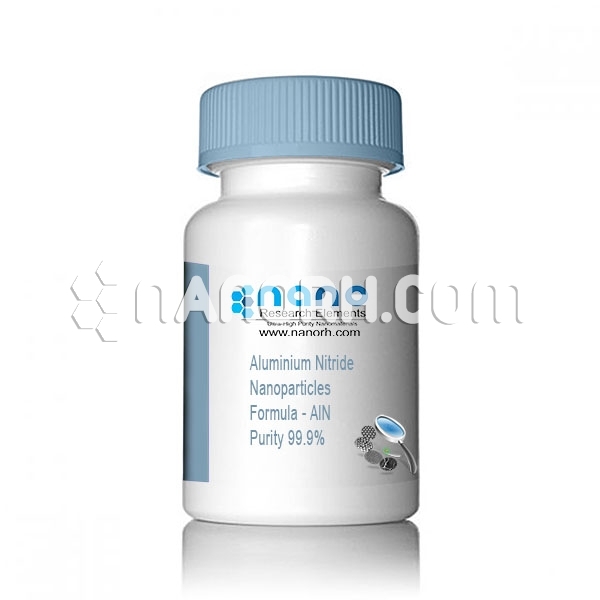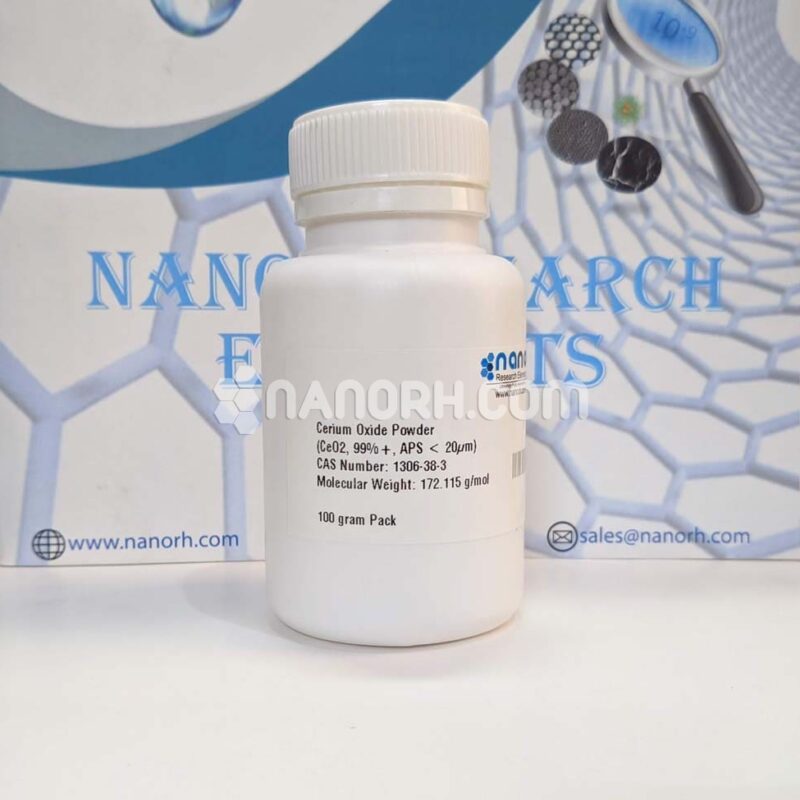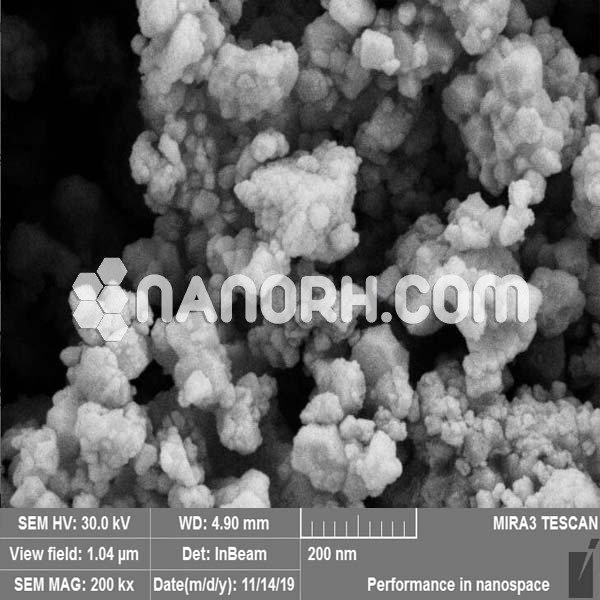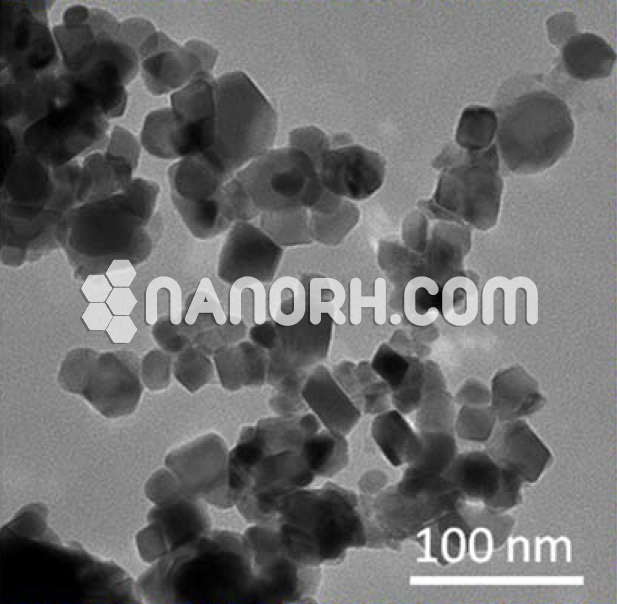| Aluminum Nitride Nanoparticles | |
| Product No | NRE-5007 |
| CAS No. | 24304-00-5 |
| Formula | AlN |
| APS | <100nm (Can be Customized) |
| Purity | 99.9% |
| Color | Off-White |
| Molecular Weight | 40.982 g/mol |
| Density | 3.260 g/cm3 |
| Melting Point | 2500 °C |
| Boiling Point | NA |
Aluminum Nitride Nanoparticles
Aluminum nitride (AlN) is a nitride of aluminum. Its wurtzite phase (w-AlN) is a wide bandgap (6.01-6.05 eV at room temperature) semiconductor material, giving it a potential application for deep ultraviolet optoelectronics.
Epitaxially grown thin-film crystalline aluminum nitride is used for surface acoustic wave sensors (SAWs) deposited on silicon wafers because of AlN’s piezoelectric properties. One application is an RF filter that is widely used in mobile phones, which is called a thin film bulk acoustic resonator (FBAR). This is a MEMS device that uses aluminum nitride sandwiched between two metal layers.
Aluminum nitride is also used to build piezoelectric micromachined ultrasound transducers, which emit and receive the ultrasound and which can be used for in-air rangefinding over distances of up to a meter.
Metallization methods are available to allow AlN to be used in electronics applications similar to those of alumina and beryllium oxide. AlN nanotubes as inorganic quasi-one-dimensional nanotubes, which are isoelectronic with carbon nanotubes, have been suggested as chemical sensors for toxic gases.
Currently, there is much research into developing light-emitting diodes to operate in the ultraviolet using gallium nitride-based semiconductors and, using the alloy aluminum gallium nitride, wavelengths as short as 250 nm have been achieved. In May 2006, an inefficient AlN LED emission at 210 nm was reported.
There are also multiple research efforts in industry and academia to use aluminum nitride in piezoelectric MEMS applications. These include resonators, gyroscopes, and microphones.




